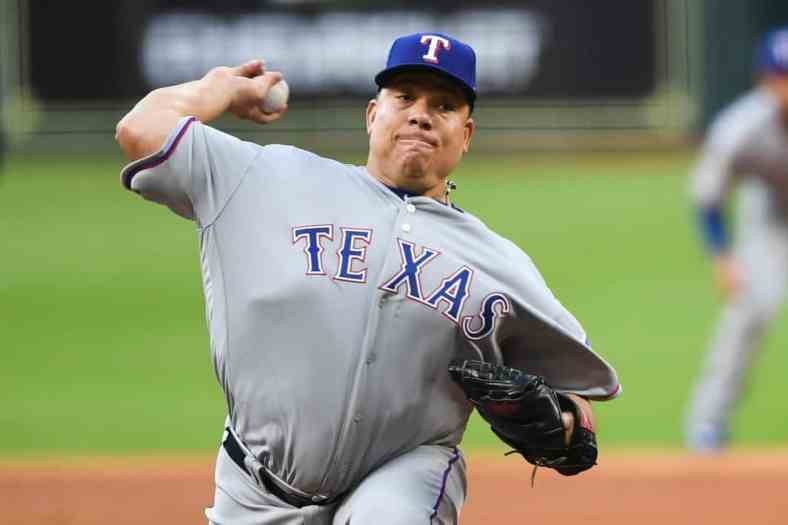
While we’re still early in the MLB season, it’s never too early to start thinking about trades. Teams generally have multiple players on their radars. But when it boils down to it, each team has one guy that should be targeted above the rest.
Of course, we are trying to keep this realistic. Teams in need of an outfield upgrade can target Mike Trout all they want. But it’s not happening.
But while Trout’s going nowhere, we can’t say that about other big name players. For example, Jose Abreu, J.T. Realmuto, Michael Fulmer, Mike Moustakas and Domingo Santana should all find themselves on the radar of at least one team. Additionally, star prospects like Nick Gordon, Ryan McMahon, and Kolby Allard should all be targets of selling teams.
Whether the goal is to win the World Series in 2018 or execute a successful rebuild, each team is trying to improve. As far as how to improve, going after these players would certainly help.
This is each team’s one ideal trade target.
Washington Nationals: Brad Hand, closer, San Diego Padres
A sub-par bullpen is nothing new for the Nationals. But given how improved the National League East this year, that won’t be quite so easy in 2018. Additionally, even if Washington can overcome a shaky bullpen in the regular season, the last several postseasons have taught us that an effective bullpen is required if you’re going to go on a deep run.
Hand is certainly an effective reliever. He has a 2.70 ERA, 1.08 WHIP, and a 14.6 K/9 rate. This isn’t a one-year deal, either. Since the start of the 2016 season, Hand has posted a 2.57 ERA, 1.03 WHIP, and an 11.8 K/9 rate. He can fit anywhere in the back of the Washington bullpen, including, if need be, the closer role. The Nationals can use the bullpen upgrade. Hand would certainly supply that.
Chicago White Sox: Ryan McMahon, first baseman, Colorado Rockies (prospect)
While the present is rough, the future looks bright for Chicago. The White Sox have either young Major Leaguers or highly touted prospects at several key spots. What Chicago doesn’t really have is a first baseman of the future. Jose Abreu is 31 and is only signed through 2019.
That’s where McMahon comes in. McMahon has certainly experienced some struggles at the Major League level. But that sample size is brief. A season ago, he hit .355/.403/.583 with 20 home runs in the minors. Additionally, Chicago can draw from the Yoan Moncada experience to help McMahon overcome his MLB struggles. Moncada struggled mightily in his first days as a Major Leaguer. He’s far from a finished product but in 2018, he’s showing a lot of what made him such a highly touted prospect.
McMahon can do the same for Chicago, giving the Sox a first baseman of the future in the process.
Philadelphia Phillies: Nicholas Castellanos, right fielder, Detroit Tigers
The Philadelphia offense has some impressive names. But more than a month into the season, the power just hasn’t really been there for the Phillies. Philadelphia ranks 22nd in slugging and 20th in home runs. One of the main culprits has been the right field position. The Phillies have gotten only three home runs and a .285 slugging percentage from the traditional power-hitting position.
As it happens, Castellanos plays right field. We grant that, like the Philadelphia right fielders, Castellanos has only three home runs on the season. But despite the moderate home run total, Castellanos has 16 extra-base hits and a .507 slugging percentage. So, even if he’s not hitting the ball over the fence, he is driving the ball. The Phillies’ lineup would be instantly upgraded upon landing Castellanos.
Minnesota Twins: J.T. Realmuto, catcher, Miami Marlins
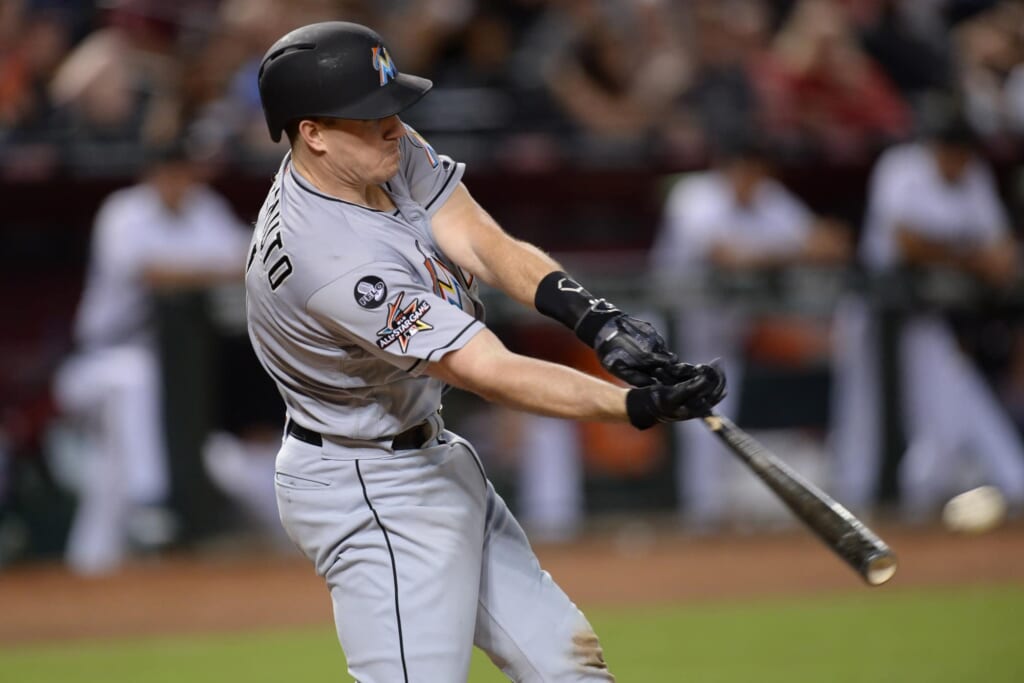
The Minnesota offense has struggled in 2018. The three home runs and .178/.256/.308 slash line that the Twins have gotten from their catchers certainly haven’t helped matters.
Now, how realistic is this trade? It’s hard to say. Realmuto reportedly requested a trade in the offseason. He hasn’t been dealt yet and given how active the Marlins otherwise were, that would indicate that they don’t want to deal him. On the other hand, the Twins are an American League team with a good farm system. So, if there’s a team to make this deal with, it’s Minnesota.
The Twins should probably act fast, too. Minnesota is still in the division race, but that’s due mostly to a poor American League Central. That’s not going to last forever. If the Twins want to have a serious chance in the division (or get back in the Wild Card race), a significant roster upgrade is needed.
Atlanta Braves: Kevin Gausman, starting pitcher, Baltimore Orioles
Atlanta’s pitching has generally held up in 2018. The Braves’ starters have a 3.76 ERA, which ranks ninth in the league. Unfortunately, as we look ahead, we see a fairly significant crack in the armor. A 1.35 WHIP barely cracks MLB’s top-20. Atlanta can choose to tempt fate with a rotation that allows a lot of runners but not a lot of runs. Or, it can try to stabilize the rotation. For the sake of this argument, Door No. 2 looks like a much better idea.
The primary culprit for the high WHIP is the walks. The BB/9 rate of the Atlanta starters (3.7) ranks as one of the worst in baseball. As such, a pitcher like Gausman, with a 1.15 WHIP and 2.5 BB/9 rate, looks pretty intriguing. He would provide an instant upgrade to the rotation. As we get into the summer, tempting fate with a lot of base runners at a live yard like SunTrust Park is going to get more problematic. Gausman may not be a headliner, but with a 3.30 ERA, 1.15 WHIP, and a better than respectable walk rate, he’d make the Braves a better team.
Kansas City Royals: DJ Peters, center fielder, Los Angeles Dodgers (prospect)
When looking at any team, we have to ask ourselves a question. Are we trying to improve the 2018 version of the team, or its long term outlook? We could make the 2018 Royals better, but there’s no real way to make this team a playoff contender. So, future outlook it is. Adding Peters would go a long way towards improving Kansas City’s long term prospects.
Peters looks like an ideal player for the modern game. He does strike out a lot, but he’s also hit at every level. In only 66 games of rookie ball in 2016, he hit .351/.437/.615 with 13 home runs. Over a full season of Advanced-A ball in 2017, he hit .276/.372/.514 with 27 home runs. In Double-A this year, Peters is hitting .283/.371/.469 with five home runs. That’s the kind of player that the Royals should want to be building around. Making things better is that in its bullpen, Kansas City does have pieces that Los Angeles should want. So, this trade doesn’t seem unrealistic.
New York Mets: Tyson Ross, starting pitcher, San Diego Padres
Prior to acquiring Devin Mesoraco for Matt Harvey, the Mets needed someone to upgrade the catching position. Now, we’re at least willing to wait and see how Mesoraco does. The more pressing need is a starting rotation upgrade. With Noah Syndergaard and Jacob deGrom, New York doesn’t necessarily need a top-of-the-rotation guy. What the Mets do need, though, is some reliability behind those guys.
Ross is that guy. He’s not an ace. But with a 3.89 ERA and 1.22 WHIP, Ross would work as a rock solid No. 3 starter. He won’t be the biggest name on the trade block. Bigger names will likely be traded and will certainly be rumored. But New York doesn’t have the need for those guys, or the prospects to acquire them. Ross is a pending free agent. The Mets should have what it takes to bring him on board. If they have any hopes of remaining in contention in 2018, bringing in Ross (or someone like him) is a must.
Detroit Tigers: Nick Williams, right fielder, Philadelphia Phillies
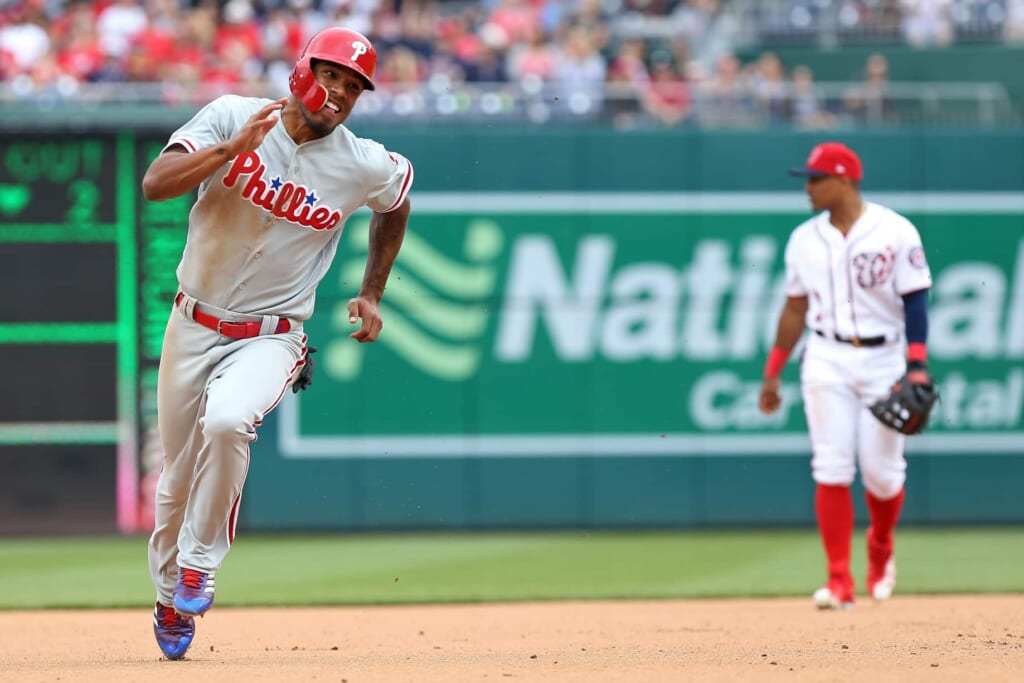
Like the Royals, the Tigers are in the early stages of a rebuilding process. And as we look at Detroit’s top young players and prospects, something that we can’t help but notice is an alarming lack of position players. That needs to change.
Williams can be a building block. He is off to a cold start in 2018. But between Triple-A and the majors, he hit 27 home runs with a .491 slugging percentage in 2017. For the Phillies, who have a fairly bright outlook over the next two seasons, Castellanos works well. But the Tigers should be playing the long game. As such, a man who’ll be a free agent after 2019 (like Castellanos) doesn’t serve much purpose. A player like Williams, who has a lot of potential and won’t even hit arbitration until after the 2020 season, works much better for Detroit.
Miami Marlins: Nick Gordon, shortstop, Minnesota Twins (prospect)
Not only should the Twins want to acquire Realmuto, but the Marlins should be looking to trade him. If you want to disagree with what Miami is doing, fine. But we can’t put toothpaste back in the tube. Giancarlo Stanton, Marcell Ozuna, Christian Yelich, and Dee Gordon are gone. The Marlins have already started the rebuilding project. They might as well go all the way and acquire even more franchise building blocks.
Gordon, the brother of the aforementioned former Marlin, is one of those guys. He’s hitting .324/.358/.491 with two homers and three steals in the minors. Additionally, like his brother, Gordon can play either second or short. That will allow Miami flexibility in pursuing future players. A deal centered around Realmuto and Gordon would make a lot of sense for both sides.
Cleveland Indians: Mychal Givens, relief pitcher, Baltimore Orioles
Here’s something we haven’t been able to say in a while. The Cleveland bullpen has been bad. Not just bad compared to its previously lofty standards, either. The Indians’ relievers have been among the worst in baseball. Someone like Givens would be just what the doctor ordered.
The 4.00 ERA and 1.22 WHIP may not look too special. But, as is common for relievers in May, those are significantly inflated by some poor early outings. In his last eight outings, Givens has posted a 1.74 ERA, 0.87 WHIP, and 16 strikeouts in 10.1 innings. That’s exactly the kind of arm that Cleveland needs. Given that the Orioles are bad (and only getting worse) Givens should be a realistic target, as well.
San Francisco Giants: Ian Kennedy, starting pitcher, Kansas City Royals
As we previously detailed, Kansas City is a team that should be looking to sell. With that in mind, we’re guessing that the Royals would be pretty willing to part with a 33-year-old who’s owed $16.5 million over each of the next two seasons (plus what’s left of the $16 million he was owed for 2018). The Giants are coming off of a 98-loss season and we could make an argument that they should be looking to sell. But they also acquired Andrew McCutchen and Evan Longoria in the offseason. This is a team that wants to win now. Acquiring Kennedy can help the Giants stay in the postseason race.
Kennedy has a 2.92 ERA on the season. Now, a 1.38 WHIP would indicate that the ERA is not likely to stay at that level all year. But while some regression is in order, we’re not sure how much, especially if he does go to San Francisco. Kennedy has a respectable 35 strikeouts in 37 innings. His walk rate (2.7 per nine) is also fine. Kennedy has allowed 40 hits and make no mistake, that’s a high number. But if there’s any stadium in the league where you can do that while still keeping the runs down, it’s AT&T Park. This is certainly an addition the Giants should think long and hard about making.
New York Yankees: Jared Hughes, relief pitcher, Cincinnati Reds
The Yankees aren’t exactly a team with many glaring weaknesses. In fact, nothing really stands out as a potential Achilles heel. We’re looking at the bullpen for two reasons. One, while it’s not too close, the bullpen is the closest thing New York has to a fatal flaw. Two, even to the extent that you disagree, depth in the bullpen is never a bad thing.
Since the start of the 2014 season, Hughes has put up a 2.59 ERA and 1.24 WHIP. He’s been even better in 2018, posting a 1.71 ERA and 0.95 WHIP. The Yankees may not need Hughes. But a team with genuine World Series aspirations could do a lot worse.
Colorado Rockies: Jose Abreu, first baseman, Chicago White Sox
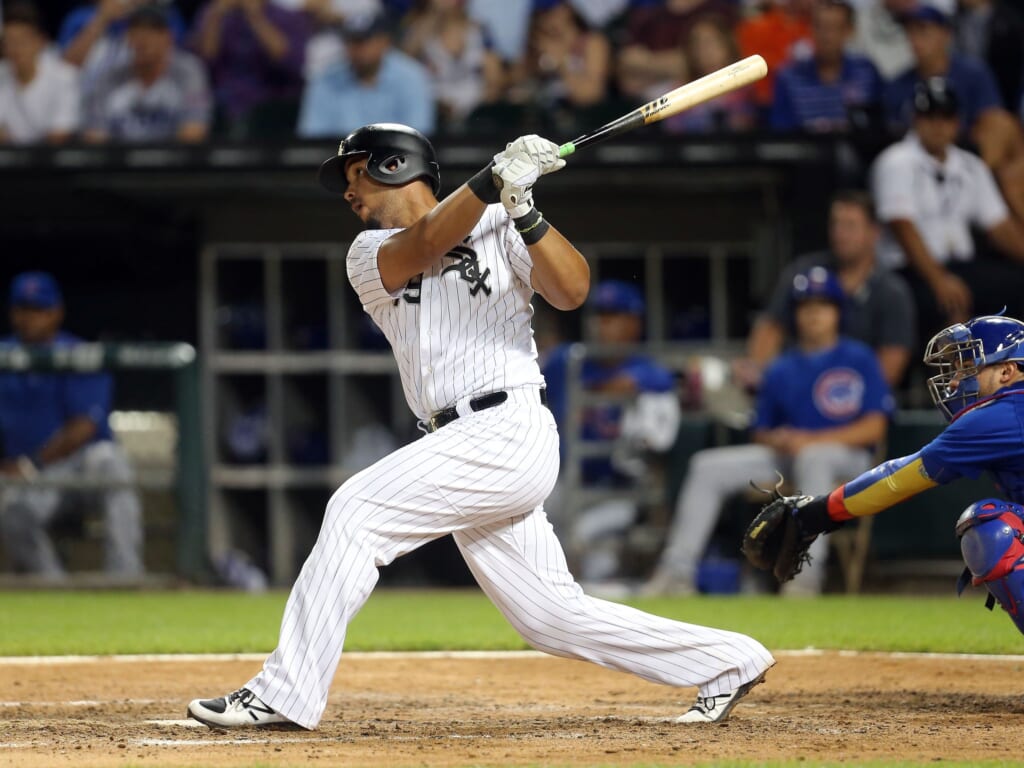
We don’t hear Abreu talked about a lot. But the reality is that he’s been one of baseball’s most dangerous, consistent hitters since his rookie year in 2014. Getting to play for a contending team could help Abreu get the credit he deserves. The Rockies are a contender and as fortune would have it, can use a jolt at first base.
On the season, Colorado first basemen are hitting .181/.278/.323 with four home runs. Remember, this is not only a traditionally offensive position, but a traditionally offensive position at Coors Field. There’s no way that the Rockies first basemen should be among the least productive in the league. Abreu, with seven home runs and a .262/.331/.475 slash line, would be a massive upgrade. It gets even better when we remember that the average and OBP are both well below his previous career lows. So, he’s likely going to get better as we get deeper into the season.
He won’t be cheap. Dealing someone like McMahon (and likely others) will hurt. But Abreu will be worth it.
Baltimore Orioles: Kolby Allard, starting pitcher, Baltimore Orioles (prospect)
The Orioles and Braves are ideal trade partners for multiple reasons. One, in Gausman, Baltimore has someone who can help a contending Atlanta team immediately. Two, the Braves are absolutely loaded with pitching prospects who can help the Orioles. Allard is one of them.
He has a 2.25 ERA and 1.11 WHIP in Triple-A Gwinnett in 2018. In his Minor League career, Allard has a 2.95 ERA and 1.18 WHIP. This guy is ready to come up any time. But it’s not like Allard is some prospect in his mid-20s. He won’t even be able to legally buy a drink until August.
Baltimore needs to start a rebuilding project and quite frankly, it can’t start fast enough. Allard is definitely the kind of player who should be a part of that process.
San Diego Padres: Erick Feede, starting pitcher, Washington Nationals (prospect)
The Friars are something of a weird team. In a way, they’re kind of like the bad team version of the Yankees. Clearly, San Diego isn’t going anywhere in 2018. But as we look at this team’s young talent and prospects, very little jumps out in terms of glaring flaws. In a way, rebuilding doesn’t really describe the Padres. Not quite ready yet seems much more apt.
If the Padres are lacking anything in the way of prospects, it’s MLB-ready starting pitching. Ideally, you don’t want to have all of your young pitchers coming up at the same time. It would be nice to have someone established in the MLB for a year or two when the rest of the guys show up. That’s Feede. San Diego can be smart about it. The Padres really don’t need a significant boost in the prospects. But if the Nats do come calling for Hand, a pitcher like Feede is what San Diego should be targeting.
Toronto Blue Jays: Cole Hamels, starting pitcher, Texas Rangers
At 34, Hamels remains an effective pitcher. His ERA (3.94) and WHIP (1.36) may not look great but by and large, Hamels has thrown well. At this point of the season, the 52 strikeouts in 45.2 innings is a much better indicator of how well he’s throwing the ball. Unfortunately for Hamels, it’s happening for the Rangers, who are the worst team in the AL West by a considerable margin.
The Blue Jays really need the starting pitching upgrade. The rotation has a 5.40 ERA on the season. So, even if Hamels only maintains his 3.94 ERA, he’d be a sizable upgrade. It’s hard to imagine Toronto remaining in playoff contention unless the pitching gets a lot better. With that in mind, the Jays would be well advised to act quickly.
Arizona Diamondbacks: Scooter Gennett, second baseman, Cincinnati Reds
One of baseball’s best offensive teams a year ago, the Diamondbacks have dealt with some inconsistent bats in 2018. Arizona owes its great start more to its pitching than hitting. Looking at the team, much of that can be chalked up to some key injuries and Paul Goldschmidt not having a great start. Now, we’re not really concerned with the injuries and we’re certainly not worried about Goldschmidt turning it around. But one source of struggle has been at second base. The Diamondbacks are hitting .239/.301/.366 with only two home runs at the keystone.
Gennett, on the other hand, is having a fine year for a Reds team that is struggling and struggling mightily. He’s hitting .288/.333/.447 with four home runs and, for all intents and purposes, isn’t doing much good for Cincinnati. If anything, trading Gennett would enable the Reds to move Eugenio Suarez to either short or second (assuming he’s not also dealt), play Jose Peraza at the other middle infield position, and call third base prospect Nick Senzel up.
There’s certainly enough logic on the Cincinnati end of this trade for Arizona to make a serious push.
Tampa Bay Rays: Domingo Santana, right fielder, Milwaukee Brewers
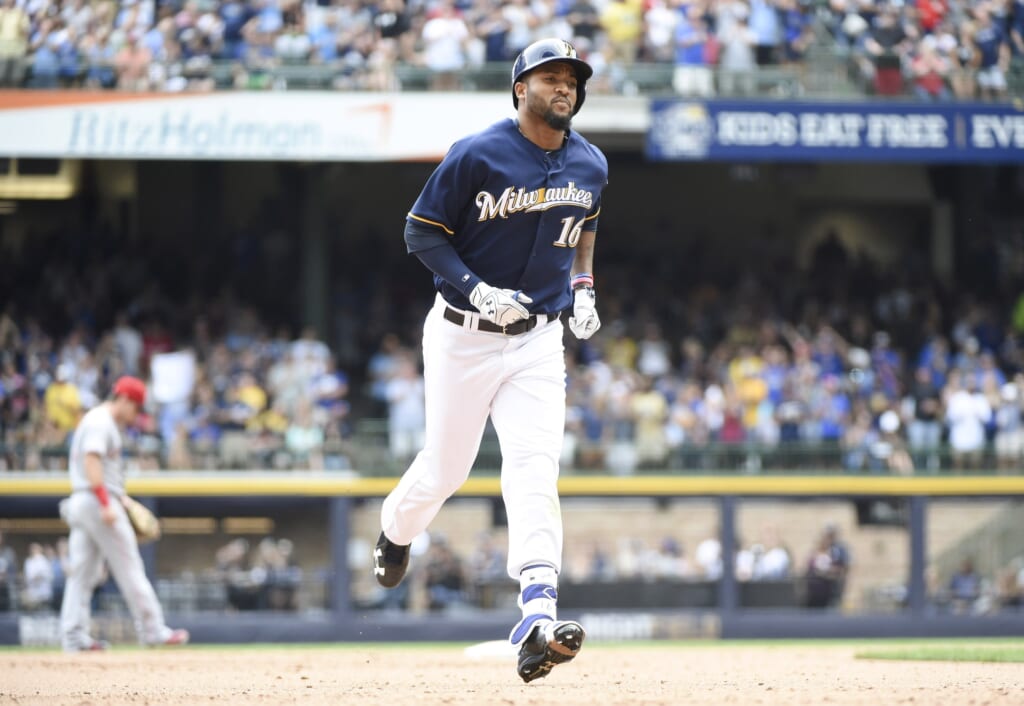
The Rays are one of the more complicated teams to figure out. They’re not bad enough to be sellers, but not quite good enough to be definitive buyers, either. So, we’re thinking that while Tampa shouldn’t be going prospect hunting, it should be looking for young MLB talent. Santana, who is 25, coming off of a 30 home run season, and won’t become a free agent until 2022, seems to fit that description quite well.
We’re not down on Carlos Gomez. In fact, while he shouldn’t be any team’s No. 1 target, we think that Gomez would do great on a contending team as a pinch hitter/fourth outfielder. In a crunch, he can start. Gomez is just not an every day player, anymore. Even with a respectable five home runs, he’s hitting .202/.256/.355. Tampa would do well to go after Santana, get him out of the crowded Milwaukee outfield, and give him a chance for every day at-bats. We sure like what we’ve seen when he’s gotten those chances.
Los Angeles Dodgers: Michael Fulmer, starting pitcher, Detroit Tigers
For the third year in a row and fourth time in five years, Clayton Kershaw is on the disabled list. It’s not something you want to see from a 30-year-old pitcher who’s thrown as many innings as Kershaw. Considering that, and that Kershaw will likely be a free agent at season’s end, Los Angeles has to think about strengthening its rotation long term. In the short term, even with a healthy Kershaw, the Los Angeles starting rotation depth is a bit iffy.
Fulmer goes a long way towards solidifying both the short and long term issues. With a 3.51 ERA and 1.27 WHIP, he’s pitching well this year. If anything, his career numbers (3.46 ERA, 1.15 WHIP) indicate that the numbers will get a little better the rest of the way. Additionally, Fulmer is 25 and won’t be a free agent until 2023.
Because of that, Fulmer won’t be cheap. He’ll cost Los Angeles some of its best prospects. But a rebuilding team like Detroit certainly should be willing to make the deal if the price is right. The Dodgers just have to figure out what that price is.
Boston Red Sox: Bartolo Colon, starting pitcher, Texas Rangers
Not unlike the rival Yankees, the Red Sox aren’t exactly loaded with problems. One thing that could potentially trip Boston up, though, is the depth of the starting rotation. The Red Sox don’t need to go ace hunting. But they could really use a reliable, veteran arm to stabilize the back end of the rotation. Of course, no conversation about stable, veteran pitchers can be had without talking about Colon.
Colon just continues to defy logic. With a 3.29 ERA and 0.83 WHIP, he’s still getting hitters out. Colon will turn 45 in May so realistically, the Rangers’ asking price can’t be that high. As long as he remains effective, the Red Sox should think long and hard about bringing the master of the gum sandwich to Boston.
Cincinnati Reds: Yordan Alvarez, left fielder/first baseman, Houston Astros (prospect)
The Reds are nowhere near a state of limbo. Cincinnati doesn’t have a lot of great talent on the MLB roster, and what talent it does have could well be gone. If and when those players are moved, Alvarez is the kind of player that the Reds should be looking for in return.
When it comes to outfield prospects, Cincinnati is a little light. The Reds also don’t have a natural fit to take over from 34-year-old Joey Votto, Alvarez can potentially fill either role. With a .299/.374/.542 and six home runs for Double-A Corpus Christi, he’s certainly been impressive in 2018.
Looking towards the future, Cincinnati should be looking awfully closely at the 20-year-old with a high ceiling.
Oakland Athletics: Francisco Liriano, starting pitcher, Detroit Tigers
The A’s are another team caught somewhere between pure buyer and pure seller. Oakland has had a decent start to the year. But even with that in mind, a lot would need to happen for the A’s to make a serious run at the playoffs. One must is that the Oakland starting rotation needs to get a whole heck of a lot better.
Liriano represents an ideal target. He’s off to a great start (2.97 ERA/1.07 WHIP). But being a free agent at the end of the year, Detroit’s asking price couldn’t be too high. He also wouldn’t be much of a financial commitment. Liriano is only owed what’s left of a $4 million deal. Even a notoriously thrifty team like the A’s can afford that. If Oakland falls out of contention, it can flip Liriano at the deadline. If that can’t happen, it’s not a huge problem.
Working within the parameters of team needs and what’s realistic, Liriano is a perfect fit for the A’s.
St. Louis Cardinals: Mike Moustakas, third baseman, Kansas City Royals
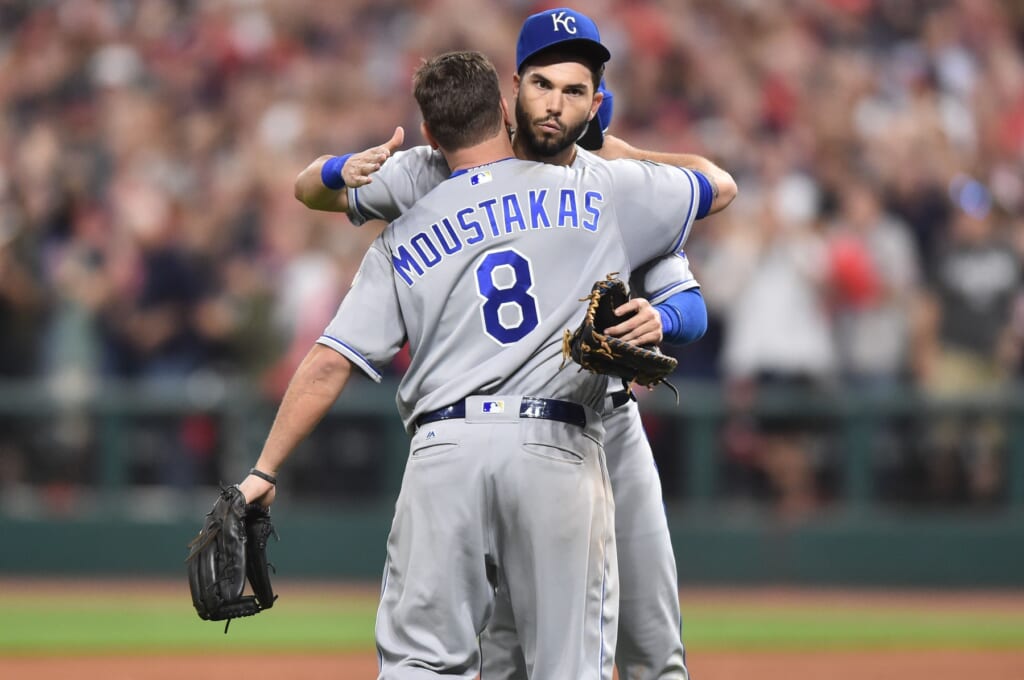
The Cardinals have had a great start to the year. But that really can’t be attributed to the production from the hot corner. St. Louis third basemen have hit five home runs, but have also struggled to a .193/.331/.378 slash line. If the Cardinals are looking to solidify the weaker parts of the team, finding more stable production at third should be a top priority.
Moustakas can certainly supply that stability. He’s coming off of a year in which he went .272/.314/.521 and hit 38 home runs. In 2018, he’s been even better, with 10 home runs already and a .300/.333/.586. Also, unlike most mashers, Moustakas isn’t a high strikeout guy. He’s struck out 19 times this season, recorded only 94 strikeouts a season ago, and has topped 100 only once. That kind of player would fit in beautifully in the Cardinals’ order.
Seattle Mariners: Kyle Gibson, starting pitcher, Minnesota Twins
With a 4.68 ERA and 1.31 WHIP, Seattle’s starting pitchers have been among the worst in the league. James Paxton is starting to live up to the fantastic potential that he’s always had. But after him, the Mariners starters have struggled. Gibson, however, has been fantastic.
With a 3.49 ERA and 1.22 WHIP, Gibson has having easily the best year of his career. Normally, we’d point out that some regression is probably in order. But a 10.2 K/9 rate and 3.12 FIP would indicate that what Gibson has done is sustainable. The Twins are in the limbo state between buyer and seller. But given that he’ll be a free agent after 2019, we don’t imagine Minnesota being completely unwilling to part with Gibson.
Given its clear need to improve the starting rotation, should definitely get the wheels in motion towards upgrading things. Gibson would be a logical place to start.
Chicago Cubs: Kelvin Herrera, closer, Kansas City Royals
Of course, we have to address the rumblings that Manny Machado could be on Chicago’s radar. It’s impossible to judge a potential trade like that until we at least start to hear other names involved. We will say this, though. Machado would be the obvious headline grabber and we can’t even say that the Cubs shouldn’t be targeting him. But as go as Machado is, Herrera is the better target for Chicago.
With an ERA and WHIP both well under 1.00 and more than a strikeout an inning, Herrera has been an overwhelming force at the back end of the Kansas City bullpen. Unfortunately, as the Royals haven’t won many games, he hasn’t had a chance to show his stuff off too much. With the Cubs, he would. Adding Herrera to an already formidable bullpen would allow Chicago to essentially shrink the game. Teams would have six innings to get a lead on Chicago. After that, good luck getting through the likes of Herrera, Carl Edwards Jr., and Brandon Morrow.
If the Cubs really want to trade for Machado, fine. But if acquiring Machado from Baltimore means giving away the pieces that would be needed to get Herrera from Kansas City, Chicago should pass.
Texas Rangers: Danny Jansen, catcher, Toronto Blue Jays (prospect)
While it is early, the Rangers are pretty clear sellers. There’s a lot of time left, but Texas has dug itself a sizable hole and crawling out of it to run down the teams in the top heavy American League will be difficult. But unlike other sellers, Texas is a team that can very easily contend in 2019. Many pieces are in place. One thing the Rangers don’t really have is a clear catcher of the future. Jansen could represent that guy.
What’s better is that with Jansen, we’re not talking about the distant future. He’s hitting .319/.422/.493 in Triple-A Buffalo. The former high school draftee has made his way through the MiLB ranks and is now knocking on the door of the majors. If the Rangers do decide to pull the trigger on a Hamels deal, someone like Jansen would represent a fine target.
Pittsburgh Pirates: Richard Bleier, relief pitcher, Baltimore Orioles
The Pirates have been one of MLB’s most pleasant surprises during the early part of the season, If that’s going to be maintained, Pittsburgh will need to upgrade what’s been a mediocre bullpen. Bleier would certainly do that. Then again, he’d represent an upgrade to even the best bullpens.
Bleier has a 0.44 ERA and 0.92 WHIP Normally, we’d have some reservations about the sustainability of those numbers with a 4.4 K/9 rate. But Bleier entered the 2018 season with a career 1.98 ERA, 1.15 WHIP, and a 4.1 K/9 rate. That goes a long way towards negating any doubts that we might have had. He’s used to getting hitters out without having great strikeout stuff. As of now, we’re not sure that the Pirates will have the roster to hang in the playoff race for a full season against the likes of the Cardinals, Brewers, and Cubs. But adding someone like Bleier would significantly increase Pittsburgh’s chances.
Los Angeles Angels: Jon Jay, outfielder, Kansas City Royals
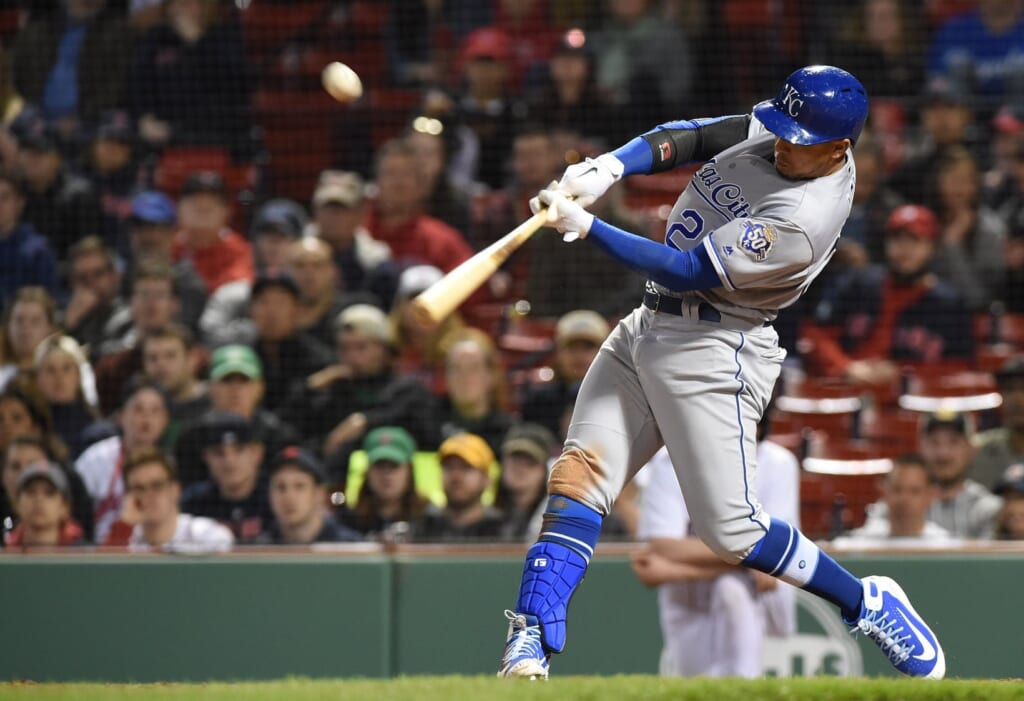
The right field position has been a black hole of production for the Angels in 2018. Halos right fielders are hitting .176/.211/.235 with two home runs. Now, one of two things figures to happen. One, Kole Calhoun, the man responsible for most of those struggles (.165/.193/.209, one home run), will turn it around and play to the level we’ve grown accustomed to. Or two, he’ll continue to struggle and need to be replaced.
In either situation, Jay is ideal. He’s capable of playing the fourth outfielder role. Jay is more than capable of coming off of the bench late as a pinch hitter, pinch runner, or defensive replacement. He’s also capable of being an every day player. He’s not going to hit for much power, but Jay has a career .288 average and .355 OBP. The Angels are more than capable of making up for his lack of power. Having someone who can be on base when those power hitters come up can make the lineup even more dangerous.
What precise role he’d play is undetermined. But no matter what, Jay would make the Halos a better team.
Milwaukee Brewers: Wilson Ramos, catcher, Tampa Bay Rays
Another reason that the aforementioned Santana-to-Tampa deal would make so much sense is that in Ramos, the Rays have someone who would really help the Brewers. Ramos has hit .315/.364/.500, which dwarfs the .174/.250/.319 line from Manny Pina.
Now, as we previously detailed, the Rays aren’t clear sellers. Generally speaking, teams like that don’t trade their starting catchers. The problem is that they’re not clear buyers, either. In fact, sharing a division with Boston and New York, Tampa sits much closer to the buyers side of the fence. On top of that, Ramos is a pending free agent. It just wouldn’t make sense for a small market team like Tampa to hold on to a player like that unless it’s clearly in contention.
Milwaukee is a clear playoff contender. It also has at least one solid piece that could help the Rays. That should make the thought of acquiring a player like Ramos quite intriguing for the Brewers’ front office.
Houston Astros: Raisel Iglesias, closer, Cincinnati Reds
Astros fans, imagine this scenario. You’re in a winner-take-all playoff game in New York against the Yankees. You’re nursing a one-run lead heading into the bottom of the ninth, but have to deal with Aaron Judge, Didi Gregorius, and Giancarlo Stanton with Gary Sanchez looming. Out of the visiting bullpen trots Ken Giles. On the traditional 1-10 scale, how optimistic are you? If you answered above three, we salute your optimism, but question your grip on reality.
Houston won the World Series a season ago despite having real issues at the back end of the bullpen. Those issues have resurfaced in 2018. Giles has a 4.76 ERA. While a 0.97 WHIP suggests that the ERA might be at least a little unlucky, we’re not so sure. That WHIP doesn’t look so good when we remember that Giles hasn’t walked anyone. He’s just getting hit. Additionally, while Giles entered the year with a 12.4 K/9 rate, he’s at 7.1 this year. Maybe he’ll improve. But if nothing else, some insurance seems wise. Iglesias is that insurance.
Iglesias has a career 3.06 ERA, 1.13 WHIP, and 10.0 K/9 rate. He’s also steadily improved, as Iglesias’ ERA and WHIP have gotten better each year of his career. That trend hasn’t changed 2018. He’s posted a 1.84 ERA, 1.09 WHIP, and a 9.8 K/9 rate to go with it. Obviously, Iglesias isn’t going to be closing out many meaningful games for the Reds. In Houston, though, he’d make a big impact and could potentially swing a playoff series.